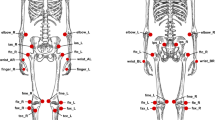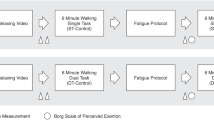Abstract
Gait is an essential bio-marker for long-term health. Traditionally, Gait analysis depends on vision-based or expensive pressure mats where patients are instructed to walk or perform standard limb movements. Early monitoring and detection of gait changes could prevent severe conditions. However, such tests happen late in the onset of the problem. Despite a plethora of wearable devices, such as fitness bands and health trackers, no single device monitors gait and provides an early diagnosis. This work presents a proof-of-concept of our in-house developed wearable inertial measurement unit (IMU) for extracting gait patterns. In addition, the results presented in this work detect changes in gait patterns. The device was tested with ten volunteers (six males and four females, 25 +/− 1.8 years, 163 +/− 8.8 cm) who provided data for both normal and abnormal walking resulting in around 700 gait samples. The results show that sudden changes in gait can be detected with an affordable and portable wearable device.
Access this chapter
Tax calculation will be finalised at checkout
Purchases are for personal use only
Similar content being viewed by others
Notes
- 1.
Auerbach N, Tadi P. Antalgic Gait in Adults. In: StatPearls [Internet]. Treasure Island (FL): StatPearls Publishing; 2022 January. Available from: https://www.ncbi.nlm.nih.gov/books/NBK559243.
References
Bhosale T, Kudale H, Kumthekar V, Garude S, Dhumal P (2015) Gait analysis using wearable sensors. In: 2015 international conference on energy systems and applications, Oct 2015
Chan H, Zheng H, Wang H, Sterritt R, Newell D (2013) Smart mobile phone based gait assessment of patients with low back pain. In: Ninth international conference on natural computation (ICNC), July 2013
Cheng Q, Juen J, Li Y, Prieto-Centurion V, Krishnan JA, Schatz BR (2013) Gaittrack: health monitoring of body motion from spatio-temporal parameters of simple smart phones. In: Proceedings of the international conference on bioinformatics, computational biology and biomedical informatics
Cimolin V et al (2011) Effects of obesity and chronic low back pain on gait. J Neuro Eng Rehabil
da Fonseca et al (2009) Laboratory gait analysis in patients with low back pain before and after a Pilates intervention. J Sport Rehabil
Estévez-García R, Martín-Gutiérrez J, Mendoza SM, Marante JR, Chinea-Martín P, Soto-Martín O, Lodeiro-Santiago M (2015) Open data motion capture: Mocapull database. Procedia Comput Sci 75:316–326
Gafurov D, Snekkenes E, Bours P (2007) Gait authentication and identification using wearable accelerometer sensor. In: 2007 IEEE workshop on automatic identification advanced technologies, June 2007
Gait and knee problems (2023). http://www.sciencealert.com/gaits-reveal-knee-problems
Godfrey A (2015) Instrumenting gait with an accelerometer: a system and algorithm examination. Med Eng Phys 37(4):400–407
Kozlow P, Abid N, Yanushkevich S (2018) Gait type analysis using dynamic Bayesian networks. Sensors (Basel) 18(10)
Kwapisz JR, Weiss GM, Moore SA (2011) Activity recognition using cell phone accelerometers. ACM SIGKDD Explor Newsl 12(2)
Mazilu S et al (2014) Gaitassist: a wearable assistant for gait training and rehabilitation in Parkinson’s disease. In: IEEE international conference on pervasive computing and communication workshops (PERCOM WORKSHOPS), March 2014
Nishiguchi S et al (2012) Reliability and validity of gait analysis by android-based smartphone. Telemed J e-health: Off J Am Telemed Assoc 18
Pepa L, Verdini F, Spalazzi L (2015) Experimental evaluation of a smartphone based step length estimation. In: 37th annual international conference of the IEEE engineering in medicine and biology society (EMBC), Aug 2015
Perez AA, Labrador MA (2016) A smartphone-based system for clinical gait assessment. In: IEEE international conference on smart computing (SMARTCOMP)
Roy S, Mandal S, Hanumaiah N (2016) Mems accelerometer: from engineering to medicine. IEEE Potentials 35(2):30–33
Sasidhar K, Satyajeet S (2017) iknow how you walk—a smart- phone based personalized gait diagnosing system. In: 2017 international conference on advances in computing, communications and informatics (ICACCI). IEEE, pp 2063–2068
Sant’Anna A, Wickstro¨ m N, Eklund H, Tranberg R (2012) A wearable gait analysis system using inertial sensors part II: Evaluation in a clinical setting. In: BIOSIGNALS
Sun L, Zhang D, Li B, Guo B, Li S (2010) Activity recognition on an accelerometer embedded mobile phone with varying positions and orientations. In: Proceedings of the 7th international conference on ubiquitous intelligence and computing
Yang J (2009) Toward physical activity diary: Motion recognition using simple acceleration features with mobile phones. In: ACM proceedings of the 1st international workshop on interactive multimedia for consumer electronics
Yang C-C, Hsu Y-L (2010) A review of accelerometry-based wear- able motion detectors for physical activity monitoring. Sensors (Basel, Switzerland)
Zhong S, Wang L, Bernardos AM, Song M (2010) An accurate and adaptive pedometer integrated in mobile health application. In: IET international conference on wireless sensor network (iET-WSN), Nov 2010
Acknowledgements
We thank Abhi Ratnam, Arvind Jayanthi and Prakhar Agarwal for working on the development of the in-house wearable device used for the experiment. We also express our gratitude to Dr. Vivek Trivedi, the physio-therapist under whose supervision the experiment was carried out and the observations were studied. This work is funded by DA-IICT SEED fund under the project titled “WalkSense: Design and Development of a wearable device for abnormal gait detection”.
Author information
Authors and Affiliations
Corresponding author
Editor information
Editors and Affiliations
Rights and permissions
Copyright information
© 2024 The Author(s), under exclusive license to Springer Nature Singapore Pte Ltd.
About this chapter
Cite this chapter
Muley, A.J., Sasidhar, K., Dhokai, R. (2024). GaitTracker: A Digital Platform for Measuring, Detecting and Analyzing Gait Changes. In: Agrawal, Y., Mummaneni, K., Sathyakam, P.U. (eds) Interconnect Technologies for Integrated Circuits and Flexible Electronics. Springer Tracts in Electrical and Electronics Engineering. Springer, Singapore. https://doi.org/10.1007/978-981-99-4476-7_16
Download citation
DOI: https://doi.org/10.1007/978-981-99-4476-7_16
Published:
Publisher Name: Springer, Singapore
Print ISBN: 978-981-99-4475-0
Online ISBN: 978-981-99-4476-7
eBook Packages: EngineeringEngineering (R0)




